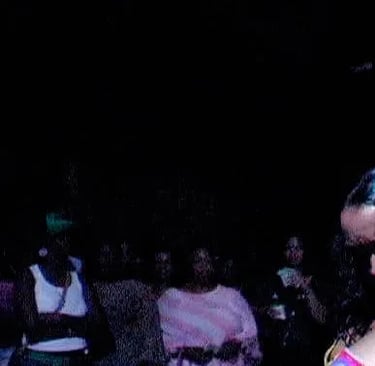Reframing desire: decentring the male gaze at the strip club
In a previous article, I briefly mentioned how frequently lesbian strip clubs here and across the pond find themselves threatened by or experiencing closure and erasure. Sex and Rage’s first lesbian strip night is a direct response to the lack of representation of lesbians and bisexual people in nightlife and sexual entertainment — both as performers and clientele. Shifting the focus towards queer female sexuality and pleasure, whilst affirming the well-being of queer sex workers and performers, is an important way of developinging an alternative or adjacent model to a sex industry where male desire is, by economic necessity, catered to almost exclusively.
Sex work is estimated to bring in between £5–9 billion to the British economy every year, though some people suggest that these figures are a conservative estimate. Whatever the case, it is safe to say that sex work is a thriving industry that contributes massively to both global and domestic economies — whether you like it or not. The majority of buyers of sexual services are men — and men, statistically, are the overwhelming perpetrators of violent crimes globally. Combine stigma with violence, socially engrained prejudice and a justice system that continuously fails victims of sexual assault, and it isn’t difficult to see how sex work has the enduring reputation of being an inherently unsafe occupation. However, it doesn’t have to be this way.
Sex and Rage’s lesbian strip night seeks to be an antidote to the centralisation of cis-male desire. For queer and lesbian workers, the kind of space that affirms both your sexuality whilst also working to destigmatise your profession is a step in a positive direction. Over the last few years, a growing number of events, such as Harpies and Sexquisite, have been springing up in response to discriminatory working conditions and, since the onset of the pandemic, the huge economic strain that has been experienced by sex workers across the UK. In addition to this, however, there has been a need to establish spaces that address both the lack of sexual diversity not just of the workers themselves, but of the consumers of sexual entertainment. The popularity of these nights are indicative of the growing need and desire for spaces that support queer workers and cater directly to queer clientele. What does this mean in the long run? It means that the sex industry, particularly forms of sex work that entail face to face interactions, has the potential for being more inclusive, more tolerant of alternative lifestyles and practices, and also, very potentially, to become a safer and more destigmatised industry for sex workers themselves.
The economic disparities between men and women, and cis-men and sexual minorities, is no doubt a factor as to why it is men who so overwhelmingly make up the majority of buyers of sexual services. However there are other reasons which are just as, if not more, important. Representation matters in all industries, and sex work is no exception. We are recovering from millenia of women and sexual minorities being relegated to the role of sexual object, not autonomous beings with our own sexual desires, needs and urges. Seeing ourselves as both providers and purveyors of sexual pleasure has been denied to the lesbian community for a long time. This needs to change.
We are active, visible agents at once redefining and challenging stereotypical notions of femininity and masculinity. What constitutes desirability, who has access to sexual entertainment and how we facilitate the expression of those desires in ways that are inclusive and consensual are important considerations if we are to radicalise an industry that for so long has sidelined our community.

